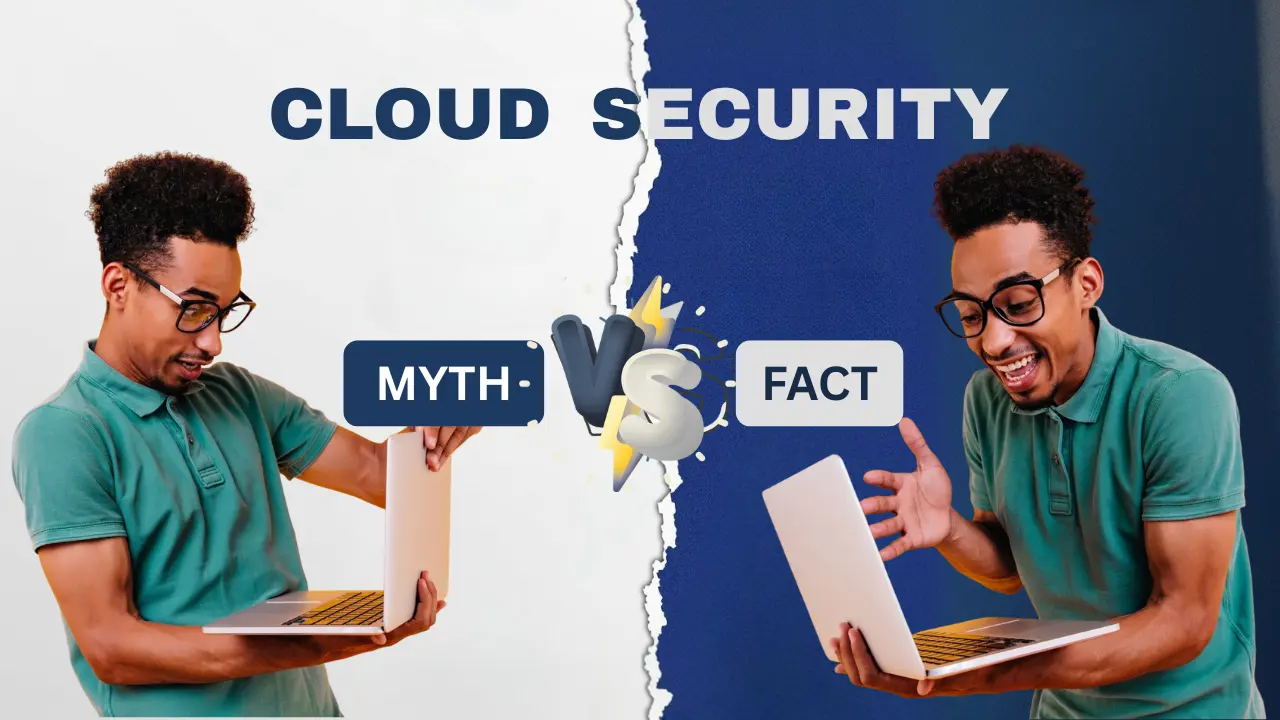
Cloud Security: Myths vs Facts
May 19, 2025
Cloud computing has become a very important resource to business operations. However, misconceptions about cloud security persist, leading to hesitation and possible errors.
Leading experts agree that cloud environments exceed on-premises security, provided organizations follow best practices. Rather than piling on tools, you need a balanced approach that combines automation with human insight — after all, misconfigurations alone account for up to 36% of cloud breaches, and cloud-specific errors jumped 75% year-over-year.
Let’s list some common myths and uncover the facts to ensure informed decisions about cloud security.
Myth 1: Cloud Is Less Secure Than On-Premises Solutions
Fact: Many still believe that putting data off-site opens a Pandora’s Box of risks. Cloud providers invest heavily in encryption, multi-factor authentication and continuous threat monitoring, often surpassing the capabilities of many organizations’ in-house IT teams.
Leading providers like Angani employ dedicated security teams, implement robust encryption methods and conduct regular security audits to ensure data protection and catch flaws before they become breaches.
Myth 2: Successful Breaches Are the Result of Complex Attacks
Fact: The Cloud Security Myths that breaches are due to complex attacks is untrue. Although highly sophisticated attackers exist, most successful attacks do not necessarily result from their increasing sophistication. End-user mistakes and incorrect settings cause the vast majority of assaults.
Movies may portray a Mission Impossible style thrilling scene with attackers ducking under lasers and successfully cracking the code to the vault door. But reality is more akin to a lucky thief simply encountering an unlocked door at the opportune moment because the last person who closed the door failed to spin the dial.
Myth 3: Cloud Security Is the Provider’s Responsibility
Fact: Cloud security operates under a shared responsibility model. While providers secure the infrastructure, customers are responsible for securing their data, applications and user access. Understanding this model is crucial for effective cloud security.
Misconfiguring access controls or neglecting patch management leaves you exposed, even on a rock-solid platform. Embrace identity-and-access management (IAM) and regular configuration audits to fulfill your side of the bargain.
Myth 4: Cloud Services Are Not Compliant with Regulatory Standards
Fact: Leading cloud providers are aware of regulatory demands and offer a range of compliance certifications and tools to help organizations meet industry-specific standards.
Providers like Angani have built their platforms with compliance in mind, ensuring businesses can meet their regulatory obligations.
By hosting all services in Kenya, Angani aligns with the Kenya Data Protection Act, keeping data under local jurisdiction and simplifying compliance. We maintain certifications against ISO 27001 and adhere to regulations, giving you clear audit trails and confidence in regulatory readiness.
Myth 5: Automation Makes Human Oversight Obsolete
Fact: Security automation accelerates detection and response, yet humans still excel at spotting logic flaws and chaining exploits in novel ways.
The true security ideal measure is a combination of automation and human oversight. Combine automated remedy for routine tasks with periodic manual reviews and threat-hunting exercises to capture the full visibility of vulnerabilities.
Myth 6: More Security Tools Always Means Better Protection
Fact: It’s tempting to stack dozens of point solutions, but complexity breeds gaps. In fact, 70% of cloud users report too many overlapping tools, which leads to alert fatigue and missed incidents.
Instead, focus on integrated platforms that provide unified dashboards, shared threat intelligence and consistent policy enforcement across your IaaS, PaaS and SaaS deployments.
Myth 7: Human Error Is No Longer a Risk
Fact: Human error remains a leading cause of cloud data breaches, accounting for 55% of incidents. To ease this, organizations should prioritize training, implement strong access controls, automate processes and conduct regular audits to reduce risks and maintain robust security.
Myth 8: Moving to the Cloud Means Losing Control over Data
Fact: Many organizations fear that migrating to the cloud equates to losing control over their data. This myth can prevent businesses from exercising the full potential of cloud computing. In reality, the cloud offers extensive control over data management and security.
Cloud providers offer comprehensive tools for data governance, allowing businesses to maintain visibility and control over their data. Features like encryption, detailed logging and monitoring tools enable organizations to track data access and usage accurately. Moreover, businesses can choose data residency options to store data in specific geographical locations, ensuring compliance with local regulations.
Myth 9: All Cloud Providers Offer the Same Level of Security

Fact: Not all cloud providers are created equal regarding security. Each offers different security features and controls.
It’s crucial to conduct due diligence when selecting a provider, checking their security certifications, compliance attestations and specific security measures.
Not only should you be aware that a firewall is being utilized, but you also need to understand which firewall the cloud service provider will employ and why. For, even two cloud environments operated by the same provider can have completely different security measures in place.
Myth 10: Cloud Multitenancy Puts My Data at Risk
Fact: Public cloud environments are multitenant, operating multiple users’ data on the same server.
However, this isn’t always the case. Cloud providers partition data to keep information restricted to the user that uploads it.
It’s like tenants in an apartment building who use one key to enter the building and another to enter their individual apartment; multi-tenant systems uniquely require both perimeter and “apartment-level” security.
Multitenant environments are generally as secure as on-premises infrastructure, if not more so. This makes it more difficult for outside hackers to access your system.
Feature Comparison: Angani vs Traditional Security
| Capability | Angani Managed Cloud Security | Typical In-House Stack |
|---|---|---|
| Next-Gen Firewall | ✔ Deep packet inspection, AI-driven threat blocking | Often legacy, signature-based |
| Network Segmentation | ✔ Dynamic, policy-driven VLANs | Static VLANs, manual configs |
| Shared Responsibility Clarity | ✔ Detailed SLAs & guidelines | Vague boundaries, ad hoc policies |
| Continuous Monitoring & SOC | ✔ 24/7 SOC with playbooks | Weekday shifts, limited hours |
| Sovereign Data Hosting | ✔ Local data centers in Kenya | Dependent on global providers |
| Backup & DR Testing | ✔ Automated failover drills | Manual, infrequent tests |
Conclusion

Understanding the realities of cloud security is important for utilizing its benefits while reducing the dangers.
By clearing up these myths, businesses can make informed decisions, implement effective security measures and confidently embrace cloud technologies. Remember, cloud security thrives on shared responsibilities, continuous vigilance and the right mix of tools and talent, not on fear or misconceptions.
Want to fortify your cloud environment? Angani is the right choice for you as:
- By introducing next-gen firewalls, network segmentation and DDoS mitigation at the infrastructure layer.
- By implementing end-to-end encryption, fine-grained access controls and continuous logging under a clear shared responsibility model.
- By offering locally-hosted sovereign cloud solutions that ensure compliance with regional data-protection laws.
- By providing 24/7 managed cloud security services, including incident response, backup and recovery and secure connectivity.
Their resources combine to deliver a resilient, scalable and compliant cloud platform that lets you expand without fear.
If you partner with Angani, you gain end-to-end cloud security that blends cutting-edge technology, local expertise and continuous management. Reach out to us now for a more tailored quote for your business.

